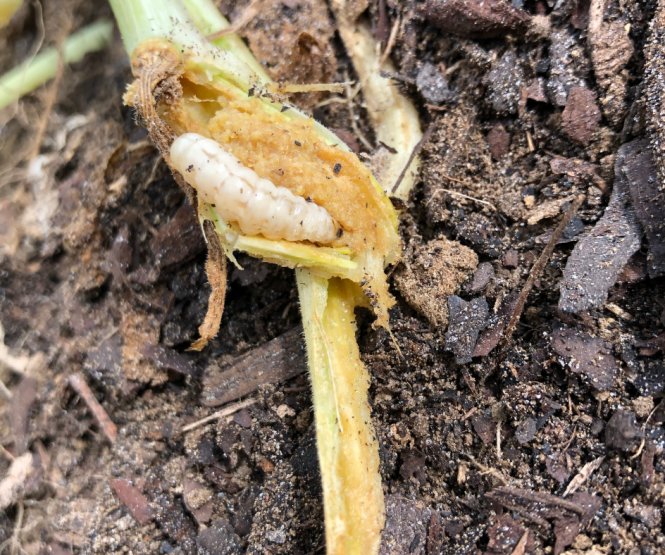

Preventing decor insect damage is crucial for preserving the beauty and value of your home’s decorative items. These unwanted guests can wreak havoc on furniture, textiles, and other cherished possessions, leading to costly repairs and emotional distress. This comprehensive guide delves into effective strategies for preventing decor insect damage, from identifying common culprits to implementing lasting solutions. We’ll explore various methods of pest control for home decor, addressing the specific needs of different materials and environments. This article will cover preventative measures, early detection techniques, and the best way to treat infestations.
Identifying Common Decor Pests
Understanding the Culprits
Decor items can attract a wide variety of insects, each with unique feeding habits and preferences. Common culprits include carpet beetles, silverfish, clothes moths, and even ants. Understanding their preferred environments and food sources is the first step to effective preventative measures. For example, carpet beetles are known for damaging carpets, rugs, and upholstered furniture, while silverfish are attracted to starchy materials like paper and wallpaper. Clothes moths, on the other hand, are known for their love of natural fibers like wool, silk, and cotton. Early detection is key for controlling infestations before they get out of hand.
Recognizing Early Warning Signs
Identifying the early warning signs of a decor insect infestation can help you take action before the problem escalates. Watch for tiny holes or frass (insect droppings) on affected items. Also look for signs of webbing, especially in dark corners or around storage areas. If you discover a build-up of small particles or unusual markings, it could be an indication that your decor items have been compromised. Don’t underestimate the importance of routine inspections, especially during the warmer months when insects are more active and the risk of damage is higher.
Preventative Measures for Preventing Insect Infestations
Establishing a Clean and Organized Space
Maintaining a clean and organized home decor environment is a primary component of preventing decor insect damage. Regular cleaning and tidying will help remove potential food sources for pests and reduce the attractive factors around them. Keeping storage areas clutter-free and free from spills of any kind will minimize the risks of an infestation.
Effective Treatment Methods and Solutions
Utilizing Natural and Chemical Control Methods
There are numerous effective methods of pest control for home decor, ranging from natural remedies to more conventional chemical solutions. Natural methods, such as diatomaceous earth and cedar chips, can effectively deter various types of insects. Chemical pesticides should only be used as a last resort and only after careful consideration of safety and potential environmental impact.
Post-Infestation Care and Prevention
Thorough Cleaning and Inspection
Following a pest control treatment, it’s crucial to thoroughly clean and inspect the affected areas and surrounding decor items to eliminate any lingering insects or residue. If needed, consider professional cleaning or restoration services for heavily damaged items. This will minimize the risk of recurring infestations. Further, implement long-term strategies that are aimed at preventing future infestations such as proper storage, regular dusting, and more.
Professional Pest Control Services
Seeking Expert Help
In cases of severe infestation or when DIY methods prove ineffective, seeking professional pest control services can offer a comprehensive solution. Professional pest control technicians possess the expertise and tools to effectively target and eliminate insects, minimizing damage and ensuring long-term protection of your decor.
Additional Tips for Preventing Insect Infestations
Maintaining Good Hygiene
Maintaining good hygiene practices in your home and around your decor items is an important aspect of effective prevention. Regular cleaning of surfaces, especially storage areas, can remove potential food sources and make your home less attractive to pests.
Proper Storage Practices
Proper storage practices are crucial for preserving your decorative items and keeping insects away. Using airtight containers, storing items in pest-resistant material, and cleaning containers before storing will help prevent long-term infestation.
Preventing Insect Damage: A Comprehensive Approach
Comprehensive and Ongoing Care
Preventing insect damage to your home decor involves a combination of preventative measures, early detection, effective treatments, and proper post-infestation care. Regular cleaning, proper storage, and mindful observation are all critical components in your approach.
Environmental Considerations
Creating a Less Inviting Environment
Consider environmental factors that attract insects. Identifying and reducing conditions that make your home inviting to pests can be effective in the prevention process. The key here is to make your environment less conducive to insect existence.
Understanding the Impact
Real-World Examples
Many homeowners face similar problems when dealing with insects damaging their decor, whether it’s valuable rugs or precious antique furniture. Understanding the impact on their environment and on their emotional well-being is very important in this situation.
Frequently Asked Questions
What are the most common insects that damage home decor?
Common insects that damage home decor include carpet beetles, silverfish, clothes moths, and ants. These insects are attracted to various materials, from natural fibers to starchy products. Proper storage and regular cleaning are important prevention strategies.
What are some natural methods for preventing insect damage to decor?
Natural methods for preventing insect damage to decor include using diatomaceous earth, cedar chips, and peppermint oil. These natural insect repellents create a deterrent environment and help minimize the risk of infestations. Routine cleaning and storage are also crucial components of this prevention method.
In conclusion, preventing insect damage to your home decor requires a proactive approach that combines preventative measures, timely interventions, and careful post-treatment care. By understanding the common causes of infestation and employing effective strategies, you can safeguard your cherished possessions and maintain a beautiful and insect-free home decor environment. To learn more and receive expert guidance, visit our website for detailed resources and contact information.